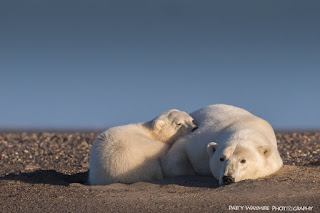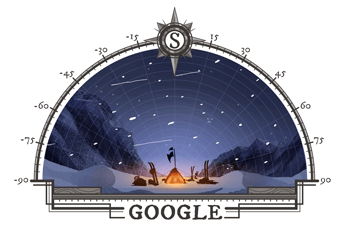What a wonderful world ...
David Attenborough with a polar bear
BBC's Frozen Planet documentary
credits: BBC
2017 está aí. As férias de Natal terminam dentro de dias. Como fizemos já para o 1º semestre 2016, apresentamos agora uma súmula das nossas publicações do ano 2016, 2º semestre, do blog Geração Polar.
A selecção é baseada no número de visitantes dos posts mais lidos.
Mas antes, gostaríamos de falar sobre o documentário BBC Frozen Planet que está a causar bastante celeuma.
Parece que a imprensa atacou o documentário BBC Frozen Planet devido ao uso de imagens de zoológicos.
O documentário causou fortes críticas. Leia mais.
Frozen Planet showed newborn polar bear cubs
at a wildlife centre in the Netherlands rather than the Arctic
credits: BBC
Looking back at 2016 we have come up with our roundup of what's been most-read on the blog Geração Polar. After the 1st semester 2016, now the selection of 2nd semester 2016.
The selection is based on page views of the most read posts.
But before we would like to talk about the BBC Frozen Planet documentary. The press has attacked the BBC documentary over its use of zoo footage. No positive images of journalists The press have recent attacks on the BBC documentary Frozen Planet. Read more
Here the Top of the Most-Read Blog Posts of 2016 :
Pausa férias : O que se passa no Árctico reflecte-se no mundo
Gelo do Mont Blanc : compreender o aquecimento global
Gronelândia aquece : cientistas preocupados, população feliz
Maior Santuário Marinho na Antárctida Protegido
SOS Planeta : Before the Flood & Leonardo DiCaprio
Oceano Árctico, temperatura mais quente do que o normal
NASA : Que quantidade de gelo perdeu o Árctico?
O 105º Aniversário 1ª Expedição ao Pólo Sul homenageada com Doodle
Pizza, the polar bear in the Grandview Aquarium, Guangzhou, China
credits: Yorkshire Wildlife Park
Our crush of the year, 2nd semester? Only one. We want to help once more Pizza, the polar bear. We are engaged on its safety and wellbeing.
Pizza, the sadest polar bear of the world. Living in the Grandview Aquarium, Guangzhou, China.
Very sad. Shocking. Help ! Urso polar 'mais triste do mundo' não vai ter nova casa
A tragic polar bear trapped in a mall in Guangzhou China has been offered a new home after his heartbreaking plight made worldwide headlines.
Yorkshire Wildlife Park in Doncaster, England, is making this public offer to Grandview in Guangzhou, China after being alerted to the issue by Animals Asia and its ongoing campaign to close the facility.
Animals Asia has collected over half a million signatures demanding the closure of the Grandview Aquarium, which includes the bear called Pizza, as its star attraction. The campaign has featured on CNN, BBC, Al Jazeera and in newspapers across the globe with the media dubbing Pizza, “the world’s saddest bear”.
Unfortunately, the Chinese aquarium said it has no need for foreign interference, after activists offered to move the animal to a British zoo. And Pizza lives always in horrible conditions.
Later in November global anger at the plight of 'the saddest polar bear in the world', who was caged in appalling conditions in a Chinese shopping mall, has borne fruit, with the mall owners agreeing to send him back to the ocean park where he was born.
Earlier this year a viral video of the three-year-old bear, called Pizza, slumped on his side, her mouth quivering, broke the hearts of animal lovers around the world.
Qin Xiaona, director of Capital Animal Welfare Association, said: 'It's a good decision, the right decision for Pizza, but it's not the end.
'Temporary is not good enough. Now we hope that Grandview will learn from this episode and move Pizza permanently so that he never again has to endure the dreadful life in a shopping mall. We hope so too.
Don't forget to visit the the roundup of what's been most-read #semester2 of our polar blog Geração Verde.
May the New Year be a polar defender!
Geração 'explorer'
31.12.2016
31.12.2016


















